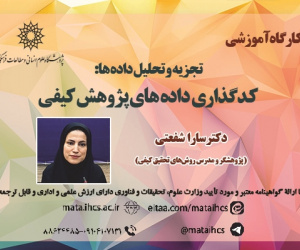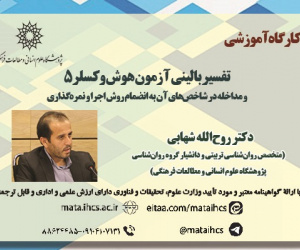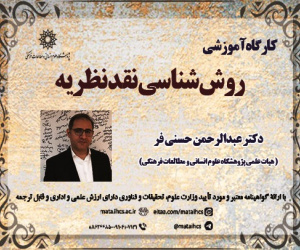تحلیل فرآیند نهادینه سازی و تثبیت نماز در جامعه بر اساس ترتیب نزول سوره ها (مقاله علمی وزارت علوم)
درجه علمی: نشریه علمی (وزارت علوم)
آرشیو
چکیده
نماز از محوری ترین مناسک عبادی اسلام و از لوازم اصلی دینداری است. سوره های قرآن در دوره های مکی و مدنی با سازوکار مشخصی به ترویج نماز پرداخته و سعی کرده اند آن را به تدریج در جامعه نهادینه سازی کنند. توجه به مراحل تبلیغ نماز در جامعه از آغاز اسلام در مکه تا پایان تثبیت آن در مدینه، الگوی مشخصی را نشان می دهد که می تواند در امور علمی و تبلیغی قابل استفاده باشد. پژوهش حاضر با توجه به سیر نزول سوره های قرآن در مکه و مدینه و با کاربست روش توصیفی تحلیلی به این نتیجه رسیده است که قرآن کریم، فرآیند فرهنگ سازی و گفتمان سازی نماز را از فرد شروع می کند و سپس وارد مراحل خانوادگی و اجتماعی می شود؛ پس از آن، کارکردهای نماز را در جامعه برمی شمارد و آن گاه به آسیب شناسی و آفت زدایی از مسائل مربوط به آن می پردازد؛ به علاوه، پس از تثبیت نماز در جامعه، همچنان به تبیین اهمیت و کارکردهای آن پرداخته و به شبهات و دشمنی های رسانه ای مخالفان در این زمینه پاسخ می دهد. این پژوهش به طور کلی، مراحل پنج گانه ای را جهت نهادینه سازی و تثبیت نماز از آغاز تا پایان نزول قرآن شناسانده است که عبارت است از: 1. معرفی نماز به مثابه آیینی معرفتی اخلاقی و مناسکی؛ 2. فرهنگ سازی نماز در سطوح فردی و اجتماعی؛ 3. گفتمان سازی و کارکردگرایی با محوریت نماز؛ 4. جامعه سازی دینی و اخلاقی در پرتو نماز؛ 5. آسیب شناسی و آفت زدایی از جامعه دینی و نمازگزار. درباره زمان بندی هر یک از این مراحل باید گفت که معرفی نماز از همان ابتدای دوره مکی صورت گرفته و پس از آن، مراحل فرهنگ سازی و گفتمان سازی به ترتیب در میانه و پایان دوره مکی به وقوع پیوسته است. مرحله جامعه سازی، در کشاکش آماده شدن مسلمانان برای هجرت به مدینه و تشکیل حکومت اسلامی پی ریزی شده و در آغاز دوره مدنی نیز همچنان به صورتی جدّی ادامه پیدا کرده است. درنهایت در پایان دوره مدنی، مرحله آسیب شناسی و آفت زدایی به صورتی مفصل تبیین شده و بر تثبیت دین قیّم با محوریت نماز تأکید گردیده است.An Analytical Study of the Institutionalization and Consolidation of Prayer in Society Based on the Chronological Order of Quranic Surahs
Prayer (ṣalāh) is one of the most central ritual practices in Islam and a fundamental requirement of religious commitment. The Qur'an, throughout both the Meccan and Medinan periods, promotes prayer through a structured process aimed at gradually institutionalizing it within society. Observing the stages of promoting prayer-from its initial introduction in Mecca to its full establishment in Medina-reveals a clear model that can be utilized in educational and missionary contexts. This study, using a descriptive-analytical method and based on the chronological order of Quranic revelation, concludes that the Qur'an begins with individual-focused discourse, then progresses through familial and societal dimensions. It highlights the communal functions of prayer, addresses related challenges and impediments, and continues to emphasize its value and respond to adversarial propaganda even after its institutionalization. The research identifies five developmental stages in this process: 1- Introduction of prayer as a cognitive-ethical and ritual practice; 2- Promotion of prayer culture on individual and societal levels; 3- Establishment of discourse and functionalism centered around prayer; 4- Religious and ethical nation-building through prayer; 5- Diagnosis and resolution of challenges facing the religious community and prayer observance.The first stage began early in the Meccan period, followed by the stages of cultural promotion and discourse in the middle and later parts of the same period. Nation-building was initiated during the transition to Medina and was emphasized in the early Medinan period. Finally, during the late Medinan period, the Qur'an presented a detailed stage of diagnostic and corrective engagement, affirming the consolidation of the upright religion with prayer at its core.







